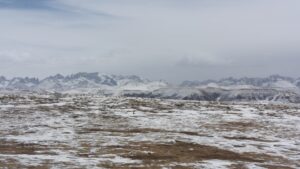Abstract/Description
Mountain forests play a crucial role in reducing the risks of snow avalanches in Alpine regions. As nature-based solution (NbS), these forests reduce the need for expensive technical measures and provide various ecosystem services (ES). However, as climate change intensifies extreme events such as severe storms, protective forests are becoming increasingly exposed to natural disturbances. Although proactive forest management is the main strategy to mitigate natural disturbances, limited resources often leave disturbed forests unmanaged, especially after large-scale disturbances. Recent studies have demonstrated that uncleared windthrow areas can provide a high protective effect by preserving the ES, thereby reinforcing its role as NbS. Despite these findings, decision-makers often follow established practices, clearing windthrow areas and replacing them with technical measures. This highlights the need for an objective, reliable, and user-friendly method to better quantify the protective effect of uncleared wind-disturbed forests. We developed a semi-automated framework based on uncrewed aerial vehicle (UAV)-derived photogrammetric data to assess the protective effect of uncleared windthrow areas against snow avalanche release. The framework includes: 1) processing of a point cloud representing the deadwood structure, 2) detecting standing trees and their crowns, 3) determining critical snow depths required to cover the deadwood and reduce surface roughness below a defined threshold favourable for avalanche release, 4) incorporating a relevant snow slab thickness, and 5) assessing the return period of such snow depths. The framework outputs are the required snow depths and their return period for potential avalanche release from uncleared windthrow areas. We demonstrate the framework’s applicability across various windthrow sites in the Alps, exhibiting different characteristics in severity, deadwood structure, residual standing tree density and slope steepness. A high-precision LiDAR-UAV point cloud, captured simultaneously with the photogrammetric survey, was used as a reference. Our findings indicate that the return period for snow depths required for avalanche release in most uncleared windthrow areas exceeds 30 years. This study represents a significant step toward developing an objective decision-support tool for practitioners and decision-makers, helping to determine where deadwood can be retained as an effective NbS for avalanche risk reduction.


